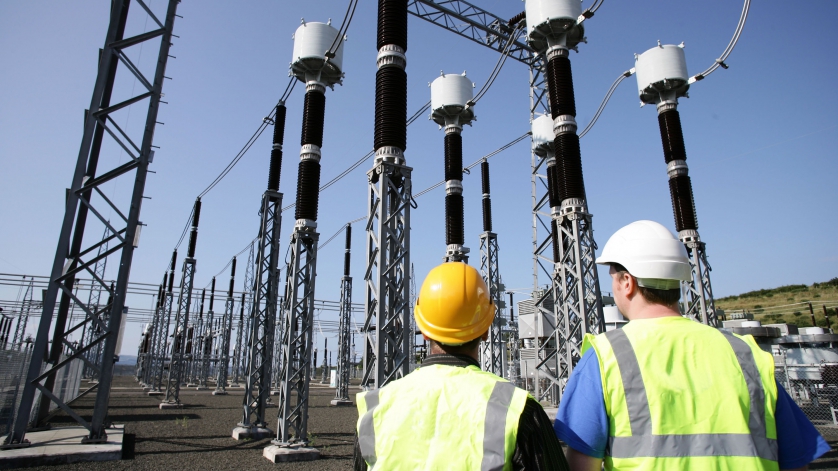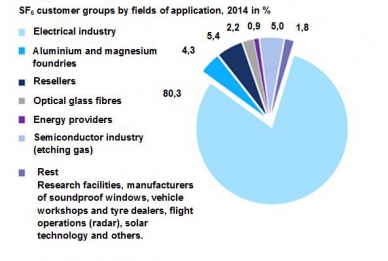
Sulphur hexafluoride – or SF6 gas for short – is, so far, the gas with the strongest known greenhouse effect. Its contribution to the greenhouse effect is about 23,000 times that of CO2 and is persistent in the atmosphere.

Source: Federal Statistical Office: Survey of particular climate-active materials “sulphur hexafluoride” (SF6), Wiesbaden, 2015
Sulphur hexafluoride is defined as a compound consisting of the two elements sulphur and fluorine. The formula is SF6. Due to its specific properties, SF6 gas has been used in many different industries. To prevent the harmful climate effects, the use of the gas in many of the application areas has been forbidden since 4th July, 2007. These include, for example, usage in soundproof windows, sports shoes or as a tyre gas in vehicles.
In many other industrial applications, however, there has not been any reasonable and applicable alternative available to date. Thus, SF6 gas continues to be used. The main field of application is electrical power engineering. In gas-insulated switchgear, the gas serves as an insulating medium and also to quench any arcing during the switching process.
European Union Regulations
In order to keep the impact of SF6 and other fluorinated greenhouse gases within limits, in 2006, the regulation over fluorinated greenhouse gases was adopted by the European Parliament. Since 2015, the reworked EU regulation, 517/2014 on fluorinated greenhouse gases has been in force (known colloquially as the F-gas regulation). In order to increase accountability with the handling of SF6 gas and to reduce emissions through careless handling, Article 10 of the F-gas regulation prescribes required training measures.
Training and certification
People who carry out work in connection with sulphur hexafluoride (SF6) gas must now be specifically trained and certified. Among the relevant activities, in particular, are:
- Installation, service, maintenance, repair or shutdown of gas-insulated electrical switchgear
- Performing leak testing on plants that fall under the F-gas regulation
- Recovery of SF6 gas
The aim of the training is to enable the personnel involved to act responsibly in their work with strong greenhouse gases and to avoid emissions through flawed gas handling. The training and certification is carried out in accordance with the EC 842/2006, EC 305/2008 European regulations as well as the chemicals climate protection ordinance.
Note
Currently, there are two certified instructors at WIKA imparting their knowledge for practical purposes and for the testing that follows. The SF6 certification takes place in the training centre in Klingenberg am Main. WIKA is one of the recognised testing and certification bodies in Germany and offers regular expertise training with final testing. Further information can be found on the WIKA website in the Service – SF6 training area.

